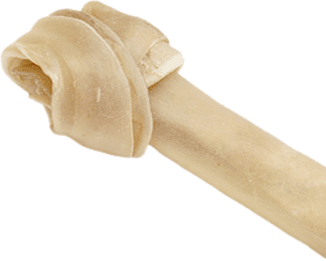


Spaying or neutering your dog is one of the most important decisions you’ll make as a pet owner. These procedures help control the pet population while offering numerous health and behavioral benefits. However, the timing of spaying or neutering can significantly impact your dog’s long-term well-being. By waiting for the right moment, you can support your dog’s development and minimize risks.
Whether you have a happy White Lab, a loyal English Cream Golden Retriever, or any other breed, understanding when to spay or neuter your dog is key to making the best choice for their health.
The ideal age for spaying or neutering depends largely on your dog’s size, breed, and sex. Smaller breeds mature faster and may benefit from spaying or neutering as early as six months old. In contrast, larger breeds—such as English Cream Golden Retrievers or White Labs—often require more time to fully develop. For these larger dogs, waiting until they are 18–24 months old allows their growth plates to close completely, reducing the risk of joint issues.
Female dogs typically experience their first heat between six and twelve months. Many veterinarians recommend spaying after the first heat to lower the risk of mammary tumors while still supporting hormonal growth. Male dogs, on the other hand, often benefit from waiting until full maturity to ensure proper physical and behavioral development.
Delaying spaying or neutering supports stronger bone and joint health. Early removal of hormones like estrogen and testosterone can interfere with your dog’s physical development. Breeds like White Labs, known for their active and working nature, may particularly benefit from hormonal support during critical training and growth periods. Hormonal changes also play a role in supporting muscle development and coordination, which are vital for active and working breeds.
A veterinarian who understands your dog’s breed, size, lifestyle, and unique health needs is the best resource for determining the optimal timing for spaying or neutering. They can evaluate factors such as your dog’s physical development and any breed-specific risks, such as joint issues or susceptibility to certain cancers. Your vet will also consider your dog’s activity level—whether they are a pet, service dog, or working breed—and adjust recommendations accordingly. Open communication with your veterinarian ensures you make an informed decision that supports your dog’s long-term health and well-being.
Spaying or neutering at the appropriate time provides significant health benefits, particularly for large-breed dogs like English Cream Golden Retrievers. Delaying the procedure reduces the risk of joint issues, such as hip dysplasia and ligament injuries, by allowing bones to develop fully.
For females, spaying after their first heat significantly lowers the risk of mammary cancer while also protecting against uterine infections. For males, waiting to neuter can reduce the likelihood of testicular and prostate cancers. Additionally, hormones play a vital role in regulating metabolism. Delaying the surgery can help active breeds like White Labs maintain a healthy weight more effectively.
Allowing your dog to mature naturally before spaying or neutering supports hormonal balance, which influences physical growth, behavior, focus, and emotional development. This can reduce anxiety, prevent unwanted behaviors, and enhance training—especially in highly trainable breeds like White Labs. Delaying surgery promotes stability during critical training periods and lowers the risk of excessive fear or reactivity.
Older dogs typically tolerate anesthesia better and recover faster, reducing the risk of complications such as infections, slow wound healing, or adverse reactions. Puppies, being more sensitive to anesthesia, face higher surgical risks. Additionally, waiting until a dog is fully mature helps promote balanced immune development, as hormones play an essential role in building and maintaining natural defenses, contributing to overall long-term health.
Spaying and neutering play a crucial role in addressing pet overpopulation and ensuring the well-being of animal communities. Every year, thousands of dogs find themselves in shelters, waiting for loving homes, with many facing uncertain futures due to the overwhelming number of unwanted litters.
By choosing to spay or neuter your pet, you are taking a proactive step in reducing the number of animals in need and demonstrating responsible pet ownership. This decision not only prevents accidental litters but also helps alleviate the burden on shelters and rescues, giving more dogs a chance to find a permanent, caring family.
Spaying and neutering offer numerous health benefits that contribute to a dog’s overall well-being. These procedures significantly reduce the risks of reproductive cancers, such as ovarian, uterine, and testicular cancers, as well as lowering the likelihood of other life-threatening conditions.
Spayed or neutered dogs also tend to live longer, healthier lives, with studies showing increased lifespans compared to their unaltered counterparts. Additionally, spaying can prevent serious medical emergencies, such as pyometra—a potentially fatal uterine infection common in unspayed females—helping ensure your dog’s long-term health and happiness.
Neutering provides several behavioral benefits that can enhance your dog’s quality of life and training potential. Male dogs are less likely to mark their territory or roam in search of a mate, reducing risks associated with escaping and injury.
While not a solution for all behavior issues, neutering can help decrease dominance-driven aggression, promoting a calmer demeanor. Additionally, without the influence of reproductive hormones, many dogs—including breeds like White Labs—can focus better on their roles as companions or working animals, making training and daily interactions smoother and more effective.
Spaying and neutering are essential parts of responsible dog ownership, but timing matters. Consulting your veterinarian and waiting for the right age—especially for breeds like English Cream Golden Retrievers or White Labs—can protect your dog’s health, enhance their behavior, and ensure a longer, happier life. With the right approach, you can support your dog’s growth while also reaping the many benefits of this important procedure.
Are you thinking about getting a White Lab puppy? Come visit Snowy Pines White Labs at our Ozark home or view our puppy live stream to see healthy dogs in action.